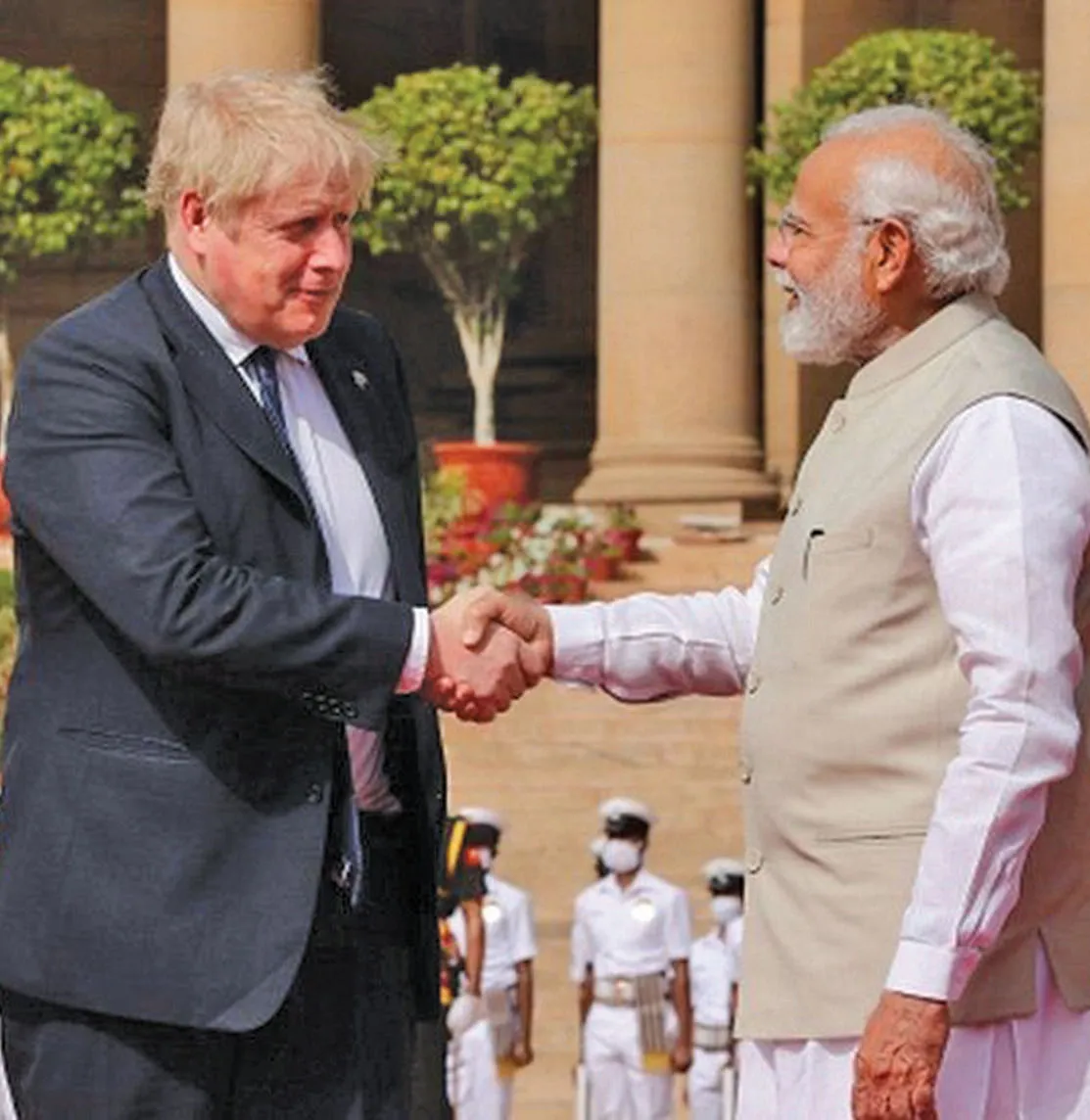Even as Boris Johnson faces ‘Party gate’ scandal at home over flouting of lockdown norms, but he expressed his confidence to stay in power. India and UK made a major breakthrough in setting Diwali as deadline to finalise trade agreement which has a potential to boost Britain’s total trade up to 28 billion pounds ($36.5 billion) annually by 2030, besides enhancing the income across UK by £3 billion ($3.9 billion).
Analysts opine that Johnson’s appreciation of Indian icons like Sachin Tendulkar and Amitabh Bachan seemed to be planned one to play to Indian gallery besides calling prime minister, Narender Modi as ‘Khas Dost’, which created friendly atmosphere to start negotiation on important trade deal which will be clinched by the end of October, 2022.
The UK prime minister had intentionally embarked upon his two day visit from Ahmedabad which was aimed at emotionally connecting with 6,00,000 Gujaratis who form a part of Indian Diaspora in the United Kingdom and the Indians contribute 6 percent of the UK’s GDP.
British government’s reaction carries a lot of meaning when it says that it looks at Gujarat, an Indian state, having the potential of incredible partnership between the UK and our friends in India.
The confirmation of more than £1 billion new investments between two great countries will create almost 11,000 new jobs in the UK. It will help in implementing the Post Brexit strategy, neutralising Pandemic impact. Liz Truss, British Foreign Secretary had described that “India’s politics” is, in some sense, “Britain’s politics” which reflects the logistics and relevance of Indian Diaspora employing and having a combined revenue of 36.84 billion pounds thereby employing over 1,74,000 people and pay over 1 billion pounds in Corporation Tax.
From Indian perspective, agreement to work bilaterally and with key partner countries to facilitate highest level access to technology to Indian industry is beneficial, though it will be useful to UK also.
Another commitment of Johnson and Modi pertained to India and the UK’s vision for eyeing the collaboration for manufacturing defense systems, spare parts, components and other related products under the “Make in India” programme through co-development, transfer of technology and setting up of joint ventures for meeting the needs of the armed forces of India and other countries.
Experts say that India and UK have taken important initiative and committed upto £75 million to roll out adaptable clean tech innovations from India to the wider Indo-Pacific, Africa and working together on international development and girls education.
On the expected lines, Johnson appreciated India’s neutral stand on Ukraine and its effort to persuade both warring nations to opt for peaceful and diplomatic means, thereby keeping its nation’s interest supreme besides preserving sovereignty.
India did condemn killings in Bucha but it refrained from directly criticising Russia since it invaded Ukraine on 24 February and did not condemn the invasion when voting was held on this issue in United Nations. Both sides were having unanimity over the strengthening of the future UK-India relations which could be based on closer defence ties which give priority to technology transfer and utilisation of ‘Make in India’ initiative and it could become a reality despite the ages old defence relations of India with Russia.
It is also India’s achievement to get the UK’s guarantee for USD 1 billion World Bank lending to support India to develop green infrastructure which is really relevant in today’s global scenario of climate change. India-UK Green Growth Equity Fund anchored by India’s National Investment & Infrastructure Fund (NIIF) and UK Foreign Commonwealth and Development Office (FCDO), in mobilising additional USD 425 million to support green infrastructure projects in India will be based on ten years of successful collaboration under India-UK development capital investment partnerships.
Both prime ministers did not mince words while praising the finalisation of the India-UK Global Innovation Partnership (GIP) implementation arrangements in the field of trilateral development cooperation which will lead to India and UK co-financing up to USD 100 million over 14 years to support the transfer and scale up of climate-smart inclusive innovations from India to third countries in Asia, Africa and the Indo-Pacific and accelerate the delivery of the Sustainable Development Goals.
Moving ahead, India and the UK have established a joint working group on electric propulsion capability partnership with the goal of developing maritime electric propulsion systems.
The two sides are also collaborating on modern fighter aircraft and jet engine technology which will be taken further in future. Both sides agreed to work bilaterally and with key partner countries to facilitate highest level access to technology to Indian industry which are welcome developments in the interest of India and UK.
Experts are of opinion that UK and India need to bridge the gap between the UK and India’s exports and imports which is getting worse as the UK sold £4.7bn worth of goods to India last year and bought £8.4bn.
Hence it becomes even worse if we take services into account and both sides seem to be worried about it which warrants corrective measures in future. The top five goods imported from India were clothing, medicine, fabrics, industrial machinery and electrical goods, with metals and power generators going in the other direction.
Experts suggest that it will be in the interest of both nations to deliver advanced security capabilities through joint research, co-design, co-development and joint production of defence technology and systems. Though both sides expressed satisfaction over the progress made under the Enhanced Trade Partnership (ETP) yet felt the dire need of early resolution of all pending market access issues in a rational manner.
(K.S.TOMAR is national columnist and political analyst)
Disclaimer: The views and opinions expressed in this article are the personal opinions of the author.
The facts, analysis, assumptions and perspective appearing in the article do not reflect the views of GK.







